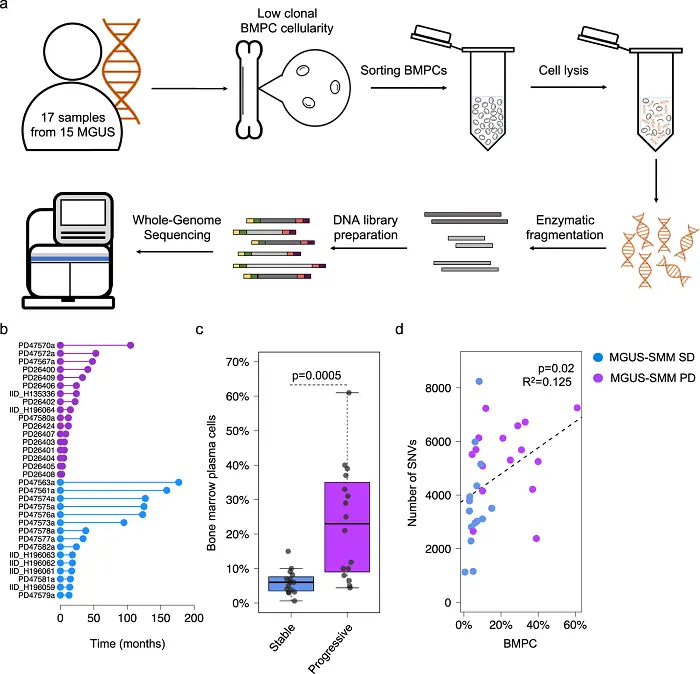Whole genome analysis, also known as whole genome sequencing (WGS), determines the complete DNA sequence of an individual’s genome. It involves identifying the order of nucleotides (adenine, thymine, cytosine, and guanine) that make up an organism’s DNA.
Process of Whole Genome Analysis:
Here’s an overview of the process and its applications:
- DNA Extraction: The first step involves obtaining DNA from the organism’s cells. This can be done from blood samples, tissue biopsies, saliva, or other bodily fluids.
- Sequencing: The DNA is then fragmented into smaller pieces and sequenced using advanced technologies like next-generation sequencing (NGS) or single-molecule sequencing. These technologies read the nucleotide sequence of each fragment.
- Assembly: Once the sequencing is complete, computational algorithms align and assemble the short-sequenced fragments into the complete genome sequence.
- Annotation: The assembled genome is then annotated to identify various genomic features such as genes, regulatory elements, and other functional elements.
- Analysis: Finally, the annotated genome is analyzed to understand its structure, function, variations, and potential implications.

Applications of Whole Genome Sequencing (WGS):
- Medical Genomics:
-
- Personalized Medicine: Whole genome analysis can identify genetic variations associated with diseases, drug responses, and susceptibility to certain conditions. This information can be used to tailor medical treatments to individual patients.
- Disease Diagnosis: It helps identify genetic causes of diseases, such as sporadic genetic disorders, enabling early diagnosis and appropriate treatment.
- Cancer Genomics: Whole genome analysis of cancer cells can reveal mutations that drive tumor growth, leading to a better understanding of oncology biology and the development of targeted therapies.
- Microbial Genomics:
-
- Infectious Disease Diagnosis: By sequencing the genomes of pathogens, whole genome analysis can aid in diagnosing infectious diseases and tracking the spread of pathogens.
- Drug Resistance Monitoring: It helps understand the genetic mechanisms underlying drug resistance in pathogens, which is crucial for developing effective treatment strategies.
- Agricultural Genomics:
-
- Crop Improvement: Whole genome analysis of crops can identify genes associated with desirable traits such as yield, disease resistance, and stress tolerance, facilitating breeding programs for crop improvement.
- Livestock Genomics: It can be used to characterize the genetic diversity of livestock breeds, identify genes related to traits like meat quality and milk production, and implement selective breeding strategies.
- Evolutionary Biology:
-
- Whole genome analysis provides insights into the evolutionary history and relationships between species by comparing their genomes.
- It helps understand the genetic basis of adaptation to different environments and the emergence of new species.
- Biotechnology and Synthetic Biology:
-
- Whole genome analysis guides the design of genetically modified organisms (GMOs) for various applications such as biofuel production, pharmaceutical production, and environmental remediation.
In summary, whole genome analysis is a powerful tool with diverse applications from medicine and agriculture to evolutionary biology and biotechnology. It provides valuable insights into genome structure, function, and evolution.